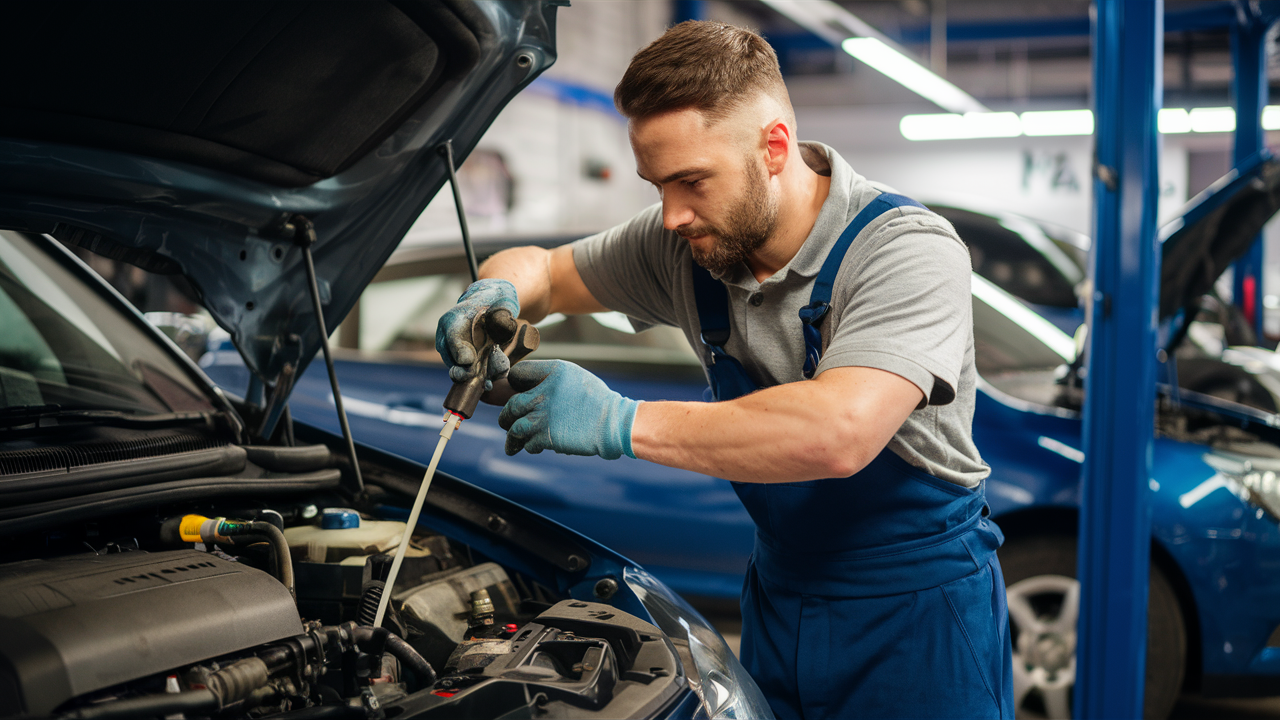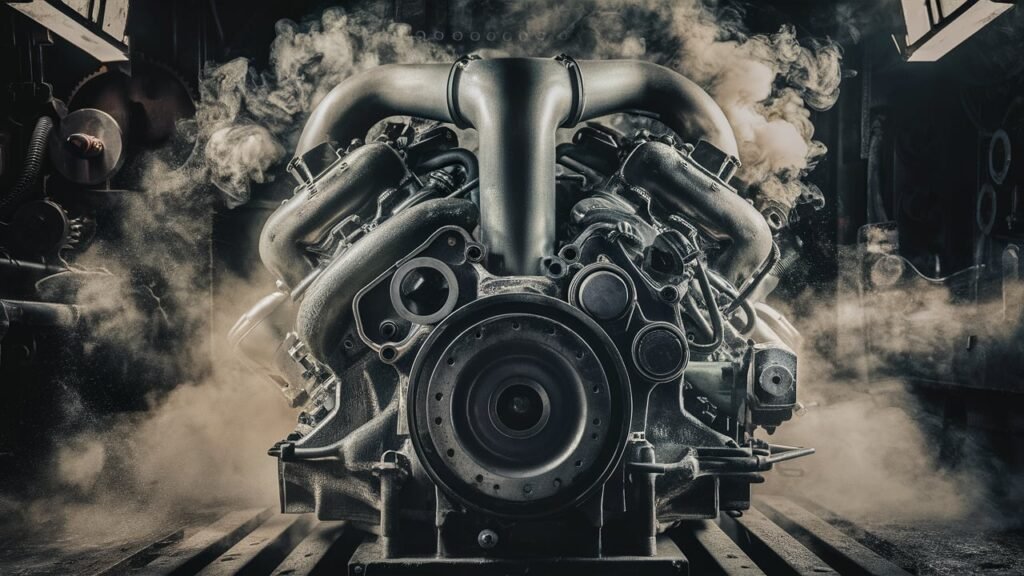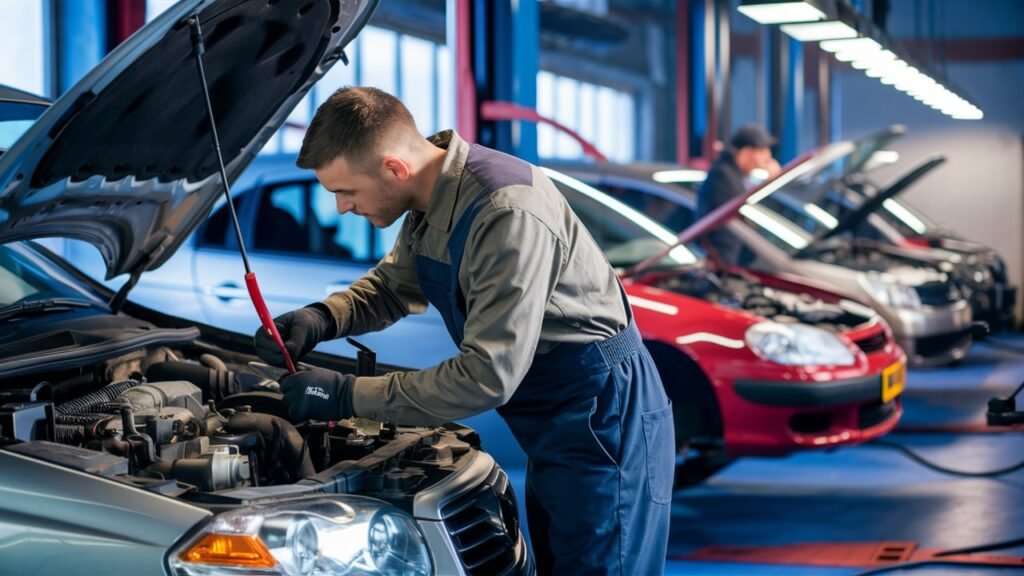
Understanding Car Engine Brake Fluid Flush
In the intricate dance of automotive maintenance, a lesser-known yet crucial partner takes center stage: the car engine brake fluid flush. Defined as the process of replacing old or contaminated brake fluid in a vehicle’s braking system with fresh fluid, this meticulous operation is not to be underestimated.
While often overlooked compared to more visible components like brake pads and rotors, the significance of regular brake fluid flushing cannot be overstressed.
Ensuring optimal brake system efficiency and safety, conducting routine brake fluid flushes remains a cornerstone of proactive vehicle upkeep. By purging the hydraulic system of degraded fluid that can compromise braking performance, this maintenance procedure bolsters not only the mechanical integrity of your car but also safeguards against potential hazards on the road.
As we delve into the complexities of understanding car engine brake fluid flush, unraveling its composition, characteristics, and procedural nuances becomes imperative for all car owners, DIY enthusiasts, and automotive technicians alike striving for peak automotive functionality and safety.
Explore with me as we dissect this fundamental aspect of vehicular care to navigate the maze of hydraulic intricacies underlying every efficient braking maneuver.
Understanding Brake Fluid.
Brake fluid is a specially formulated hydraulic fluid crucial for the proper functioning of a vehicle’s braking system. Composed primarily of glycol ethers or silicone, brake fluid operates under high temperatures and pressure to transmit force from the brake pedal to the brake pads, allowing for smooth deceleration and safe stops.
This incompressible liquid plays a vital role in amplifying the force applied by the driver on the pedal, ensuring efficient braking performance.
DOT classifications categorize brake fluids based on their boiling points and chemical compositions, with DOT 3, DOT 4, and DOT 5 being most common. These classifications are essential indicators of a fluid’s ability to withstand heat generated during braking.
For instance, while DOT 3 has a lower boiling point compared to DOT 4, making it suitable for standard vehicles, high-performance cars may require the higher boiling point of DOT 4 to prevent brake fade under extreme conditions. Understanding these distinctions is crucial for selecting the right type of brake fluid that best suits your vehicle’s needs.

Moisture poses a significant threat to brake fluid effectiveness as it can lead to decreased boiling points and corrosion within the braking system. Over time, moisture absorption occurs through microscopic pores in hoses or seals.
This water-contaminated fluid reduces its boiling temperature, potentially causing vapor lock or loss of braking ability during intense usage like prolonged downhill descents. Regular checks and timely replacement are essential to maintain optimal brake function and ensure safety on the road.
Periodic evaluation of moisture levels within the brake system is fundamental in preventing potential hazards associated with contaminated fluid.
Signs Your Car Needs a Brake Fluid Flush.
Recognizing the signs that your vehicle requires a brake fluid flush is crucial for maintaining optimal braking performance and ensuring road safety. One common indicator is spongy brakes, where the brake pedal feels soft or mushy when pressed, indicating air or moisture in the brake lines.
Additionally, strange noises such as squealing or grinding during braking can signal deteriorated brake fluid that needs immediate attention. Another warning sign is longer stopping distances than usual, which could be a result of decreased hydraulic pressure due to contaminated or old brake fluid.
Addressing contaminated or aged brake fluid promptly is essential to prevent potential brake system failures and ensure consistent braking efficiency. Old brake fluid can accumulate moisture over time, reducing its boiling point and compromising its ability to transfer pressure effectively.
This degradation can lead to unsafe driving conditions and increased risks of accidents. Regularly flushing the brake fluid helps maintain the integrity of the braking system and contributes to prolonged component lifespan.
The frequency at which your vehicle requires a brake fluid flush can be influenced by various driving conditions. For instance, if you frequently drive in high-traffic areas with continuous stop-and-go situations, your brakes may experience more wear, necessitating more frequent fluid replacements.
Similarly, vehicles used for towing heavy loads undergo increased stress on the brakes, requiring more frequent maintenance intervals. Understanding how your driving habits impact your brake system’s health can help you determine the appropriate schedule for performing a flush and ensure that your vehicle remains safe and reliable on the road.
DIY vs. Professional Brake Fluid Flush.
When it comes to maintaining your car’s brake system through a fluid flush, you have the option of doing it yourself or seeking professional assistance. Understanding the differences between these two approaches is crucial in making an informed decision based on your expertise and comfort level with automotive maintenance tasks.
A DIY brake fluid flush typically involves steps like elevating the vehicle, locating and loosening the bleeder valves, and carefully draining the old fluid while avoiding air bubbles in the system. On the other hand, opting for a professional service means entrusting your vehicle to trained technicians who follow industry standards and protocols for brake fluid flushing.
The tools required for a DIY brake fluid flush are relatively basic but essential for a successful procedure. These tools often include a wrench or socket set for removing components, a container to collect and dispose of the old fluid safely, a syringe or pump for refilling the reservoir with fresh brake fluid, and rags to clean up any spills.

In contrast, professional brake fluid flush services utilize specialized equipment like pressure bleeders or vacuum pumps that ensure thorough removal of old fluid and efficient replacement with new fluid. While both methods aim to achieve optimal brake performance, each approach has its own set of benefits and drawbacks.
One benefit of opting for a professional brake fluid flush is the expertise that comes with trained mechanics who can identify potential issues beyond just changing the fluid. They can inspect the entire braking system for wear and tear, leaks, or damaged components that may compromise safety.
However, DIY enthusiasts may prefer tackling tasks themselves as it allows them to have full control over the process and potentially save money on labor costs. Nonetheless, DIY attempts may lack the precision and efficiency that professionals offer, leading to incomplete flushing cycles or improper bleeding techniques that could affect brake responsiveness negatively.
In conclusion, whether you choose to perform a DIY brake fluid flush or seek professional assistance ultimately depends on your comfort level with vehicle maintenance tasks and your preference for precision and thoroughness.
Understanding the steps involved in each method, along with the necessary tools and their respective benefits and drawbacks, is crucial in maintaining optimal brake system functionality.
By choosing wisely between these two approaches based on your knowledge and resources, you can ensure that your car’s braking performance remains at its best while prioritizing safety on the road.
Procedure for Performing a Brake Fluid Flush.
Conducting a brake fluid flush is a crucial maintenance task that ensures the optimal performance of your vehicle’s braking system. To perform a proper brake fluid flushing procedure, follow these step-by-step guidelines:
1. **Prepare Your Tools**: Gather the necessary tools, including a turkey baster or syringe to remove old fluid, a wrench to loosen bleeder screws, and new brake fluid compatible with your vehicle’s specifications.

2. **Locate the Brake Master Cylinder**: Start by locating the brake master cylinder under the hood of your car. Remove the reservoir cap and use the turkey baster or syringe to extract as much old fluid as possible.
3. **Refill with New Fluid**: Once you have removed the old fluid, refill the reservoir with fresh brake fluid up to the recommended level. It’s crucial to use the correct type of brake fluid specified by your car’s manufacturer.
4. **Bleed the Brake Lines**: With someone in the driver’s seat ready to pump brakes upon your signal, begin bleeding each brake line starting from the wheel farthest from the master cylinder towards the nearest one. Keep an eye on the fluid level in the reservoir during this process.
5. **Test for Proper Functionality**: After bleeding all four lines and replacing enough old fluid with new, test your brakes for firmness and responsiveness before driving.
During this procedure, remember to adhere to essential safety precautions such as wearing protective eyewear and gloves due to brake fluid’s corrosive nature. Additionally, ensure proper ventilation in your workspace since brake fluids emit harmful vapors when exposed to air.
In terms of frequency for replacing old brake fluid with new, it is generally recommended to flush your brake system every 30,000 miles or every 3 years—whichever comes first—to maintain optimal braking performance and prevent potential issues caused by contaminated or deteriorated fluid.
Regularly inspecting and changing your brake fluid can extend the lifespan of critical braking components and enhance overall driving safety.
Common Mistakes to Avoid During Brake Fluid Flushing.
When conducting a brake fluid flush, there are several common mistakes that DIY enthusiasts and even seasoned automotive technicians should be wary of. Using incompatible fluids is a critical error that can lead to brake system malfunctions.
Different car manufacturers recommend specific types of brake fluid based on their formulations and boiling points. Mixing different kinds of brake fluids can compromise the overall performance and safety of the braking system. It’s crucial always to check the vehicle manual or consult with a professional before selecting a brake fluid type.
Improper bleeding techniques during the flushing process can cause issues like air pockets in the brake lines, affecting brake pedal feel and response. Bleeding brakes incorrectly may leave air trapped in the hydraulic system, leading to spongy brakes or potential failure when pressure is applied.

Following manufacturer-recommended bleeding procedures or seeking guidance from experts can prevent these problems, ensuring optimal brake performance post-flush.
Neglecting proper air removal is another significant mistake that can occur during a brake fluid flush. Air bubbles trapped in the brake lines can compromise hydraulic pressure distribution, resulting in reduced braking efficiency or even complete system failure.
Thoroughly purging air from the system by utilizing appropriate bleeding techniques and tools is essential for maintaining safe and reliable braking capabilities. By taking care to avoid these common errors and following recommended best practices, car owners can ensure a successful brake fluid replacement process that enhances both system performance and safety levels.
Importance of Professional Maintenance Checks.
Periodic inspections by qualified automotive technicians play a vital role in ensuring the optimal performance and safety of your vehicle’s braking system. Trained professionals possess the expertise to identify potential brake issues early on, preventing more significant problems down the road.
By utilizing specialized diagnostic equipment, technicians can conduct thorough tests to detect brake fluid contamination, leaks, or component wear that may go unnoticed during routine checks.
In conclusion, maintaining peak brake performance heavily relies on entrusting periodic evaluations and maintenance to skilled professionals in the automotive industry. These experts not only have access to advanced tools for comprehensive brake system assessments but also offer invaluable experience in diagnosing and rectifying potential issues efficiently.
By adhering to recommended service intervals and seeking professional care when needed, car owners can uphold the functionality and safety standards of their vehicles’ braking systems for extended periods. Remember, proactive attention to brake system maintenance through knowledgeable technicians remains key in safeguarding both your vehicle’s longevity and your own well-being on the road.




